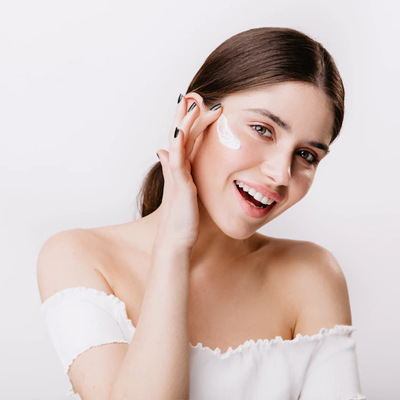
Sunscreens are promoted aggressively on different media, and rightly so. They are the key to preventing damage to the skin because of prolonged exposure to the sun’s UV rays. The regular use of sunscreen while outdoors helps in reducing sunburns, and wrinkles. Sunscreens act as the first line of defense against skin disorders by absorbing, reflecting, and scattering UV rays.
The harmful effect of Sunrays on our skin
Prolonged sun exposure results in short-term and long-term changes in the skin structure.
Short-term damage:
- Sunburns
- Tanning
- Dryness
- Discoloration
- Change in texture- wrinkles etc
Long term damage:
- Irreversible loss of skin elasticity
- Skin cancer
Different types of sunscreens
There has been a significant rise in awareness of the risks associated with sunrays and that has spurred the scientific fraternity to work on better formulations for sunscreens.
Sunscreens can be broadly categorized as:
- Organic aka chemical blockers
- Inorganic aka physical blockers
| Chemical Blockers | Physical Blockers | |
|---|---|---|
| Action | Absorb UV Rays | Reflect UV Rays |
| Composition | Aminobenzoic acid, Avobenzone, Octisalate, Octocrylene, and Oxybenzone | Zinc oxide or Titanium dioxide |
Both types of sunscreens are equally safe to use.
SPF decoded
We often see SPF quoted on the sunscreen, and people tend to pick up a sunscreen with higher SPF. Let us understand what SPF means so you can make the right choice.p>
SPF stands for Sun Protection Factor. Its numerical value is an indication of the time taken by UV rays to redden your skin if you apply it as compared to the time taken without sunscreen protection. For example: If you use SPF 15 sunscreen then the time taken to redden your skin will be 15 times more than what it takes without sunscreen. So opt for higher SPF if you are out for a longer duration in the sun.
Making the right choice of sunscreen
Now that you understand what SPF stands for, let us see what you should be looking for while buying a sunscreen
- Protection against a broad spectrum of UV rays, both UVA and UVB type
- SPF: SPF 15 is ideal for daily use or mild exposure. SPF 30 or higher is needed for prolonged exposure
- Water-resistant: CA must for swimming and heavy exercise which results in high perspiration. Reapplication of sunscreen is required as it eventually wears off after an hour or so.
Sunscreens for children
The kids have soft and thin skin and need to be protected against the sun. Sunscreens are safe for children over the age of 6 months. For kids in the age group 0-6 months, it is better to use protective clothing and shade.
Sunscreen Application Simplified
- Apply the sunscreen at least 20 to 30 minutes before you go outdoors
- Apply generously to all the body parts exposed to the sun
- Reapply sunscreen every 2 hours if you are outdoors for a longer duration, or swimming or if you sweat a lot
Safety Tips against sun
Do not depend entirely on the power of sunscreen and take additional measures against the harmful UV rays of the sun.
- Limit exposure
- Wear protective clothing
- Use sunshades, umbrellas, broad-brimmed hats, or whatever works for you to minimize skin exposure
- Use sunscreens based on your exposure
- Reapply sunscreen if needed
Hope this information was useful to you. If you are interested in finding out more about skin related issues and treatments then please click here and send a query to Alovia Clinic, or reach out to our expert Dr. Naren Parkash